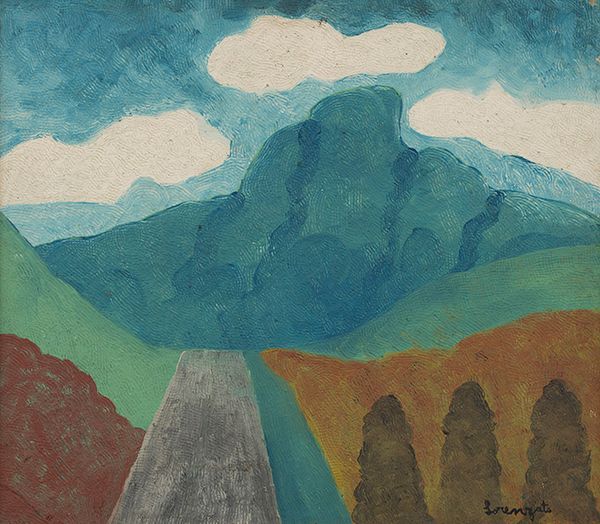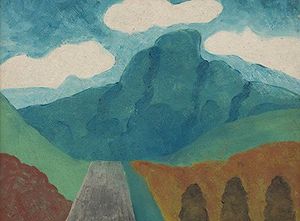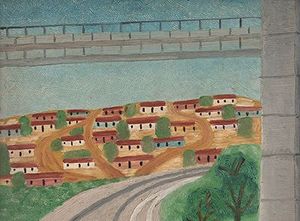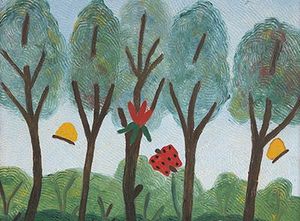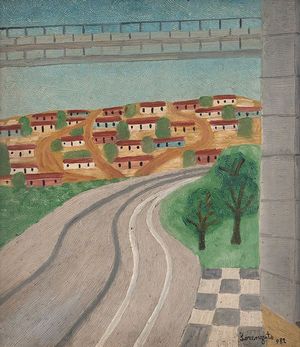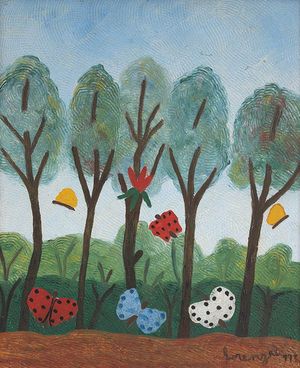Amadeo Luciano Lorenzato was a painter and sculptor known for a fascinating body of work that covered themes such as nature, urban landscapes, still lifes, portraits and scenes from everyday life. His output was vast, and it is estimated that he produced more than three thousand works by the end of his life in 1995. Among the major subjects in his work are the influence of decorative arts; the modern avant-garde, in which the constructive sense of his creations stands out or, in other words, his unique "modernity in construction", and the relevance of walking in his painting practice.
Lorenzato's earliest known works date from the 1940s, period in which he returned to Brazil after having lived for around thirty years in different European cities. Born in Brazil from a working-class Italian family, Lorenzato became known as a self-taught painter, despite having studied art at the Reale Accademia delle Arti in Vincenza, Italy. In 1928, he went on a long bicycle trip, accompanied by the painter and poster artist Cornelius Keesman. Together they traveled to various cities in Eastern Europe, an experience that left a deep impression on Lorenzato and, according to curator Rodrigo Moura, gave him the mythical aura of an "outsider, non-conformist and libertarian" artist. While in Paris, he worked as a laborer setting up the Exposition Coloniale Internationale, got acquainted with avant-garde movements, and became fascinated with Impressionist painting.
Lorenzato's work has reached new audiences lately. Recent exhibitions of his modern and popular art have paved the way to a renewed understanding of his career, allowing us to look at the artist's production beyond strict categories such as "naïve art" and "primitive art". Lorenzato's painting has a strong connection with his working-class background and the craft skills he developed in his youth. He worked for decades in the construction industry as a wall painter and decorative painter, practice to which is attributed the origin of at least two innovative techniques he adopted: the use of textures, produced with the aid of various tools adapted from construction work that add movement and vibrancy to his compositions, such as combs; and the use of mineral paints on the canvas, which he applied over a layer of alvaiade [lead white pigment], a substance generally used in exterior painting, which makes the colors look more vivid and luminous.
Among the main exhibitions in Amadeo Lorenzato's career were his participation in the 3rd Bratislava Triennale and a group show at Petit Palais in Paris, both in 1973, and his solo show at the Casa dos Contos in Belo Horizonte in 1984. His posthumous exhibitions include: Lorenzato e as cores do cotidiano, Museu de Arte da Pampulha (1995); 100 anos de Lorenzato, Casa dos Contos and Galeria da Escola Guignard (2001) and the group show Mínimo Múltiplo Comum, Pinacoteca de São Paulo (2018). Recently, in 2019, exhibitions about the artist were organized by international galleries based in London and New York. Lorenzato's works are part of important public collections such as those of Museu de Arte da Pampulha; Museu de Arte de São Paulo Assis Chateaubriand - MASP; Pinacoteca do Estado de São Paulo and the Nouveau Musée National de Monaco.
